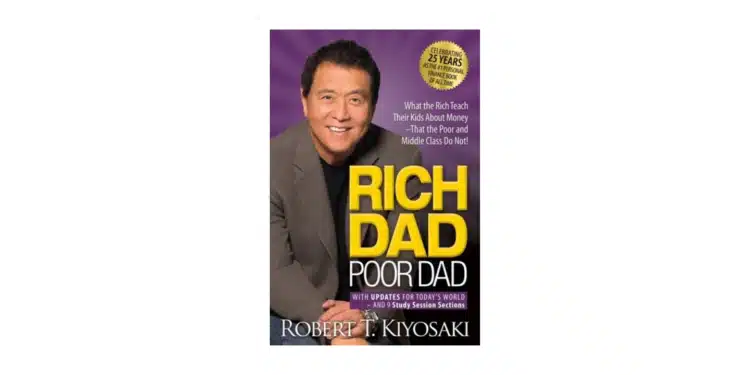Rich Dad Poor Dad by Robert Kiyosaki
Have you ever wondered why some people seem to effortlessly become richer as they get older, whilst others, no matter how much they earn, never seem to have enough money? This is a fundamental question that Robert Kiyosaki attempts to answer in his best-selling book, Rich Dad Poor Dad. With over 40 million copies sold since it was first written in 1997, Kiyosaki outlines the six rules of money for people to follow if they want to accumulate wealth.
Kiyosaki’s thesis is that your ability to accumulate wealth has nothing to do with how much you earn, and everything to do with how you think. One of the most interesting takeaways from the book is the concept of determining the difference between an asset and a liability in your personal sphere. Kiyosaki’s first rule is that if an asset doesn’t generate income, it is not an asset, but a liability. Therefore, your home, which is often thought of as an asset, is actually a liability if it doesn’t generate income.
Kiyosaki argues that the opportunity cost of buying the dream home is that it can limit your ability to invest in other opportunities or investments. Therefore, if you want to buy your own home, make sure you are also investing in cash-generating assets simultaneously. These assets can grow in value and support you in moving to a larger place. This rule challenges conventional thinking about finances, but it is a critical lesson to learn if you want to accumulate wealth.
Another important rule Kiyosaki discusses is the rule of learning one more skill. He argues that the objective is to attain financial intelligence, and to do so, one must learn accounting, investing, marketing, and law. Learning these four skills and combining them is the secret to explosive income growth. Kiyosaki suggests that we should always be looking to learn and develop, and the real advantage of working as an employee is not the salary, but the benefit we get from learning while being paid.
Kiyosaki describes his own career, where he worked in shipping, the Marine Corps, and sales before forming his first company. He believes that the fast track to being an entrepreneur is to work as an employee to learn the skill you want, and once you have mastered it, quit. While this approach may seem outdated in today’s workforce, the fastest way to build business relationships is through working in a company and networking with colleagues, clients, and suppliers.
In conclusion, Rich Dad Poor Dad is an essential read for anyone looking to accumulate wealth. Kiyosaki’s six rules of money provide valuable insights into how to think about your finances and how to develop the skills needed to succeed. By embracing these rules, you can learn to think like a rich person and increase your chances of accumulating wealth.



Get involved!
Comments